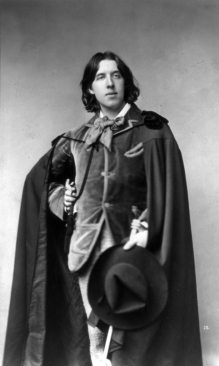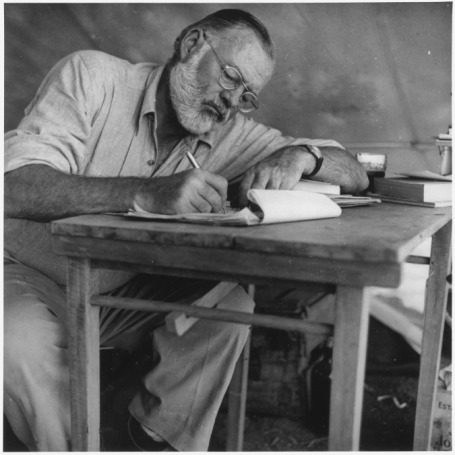One year ago, I published my first novel. It’s called Gerald Barkley Rocks.
Most writers have soft spots for their first book. I certainly do. It’s the summation of a hell of a lot of work, not to mention the tangible proof that yes, you are indeed a writer. Plus, even non-writers can’t resist seeing their names on books.
So yes, I have a soft spot for Gerald Barkley Rocks—or GBR, as I’ve come to call it, since three-letter names are hot right now. But that certainly doesn’t mean I think it’s perfect.
In fact, in honor of its one-year birthday, I’m going to mercilessly criticize GBR. Well, maybe I’ll show a little mercy. I’ll give credit when it’s deserved. But overall, I’m hoping this might be a fun and educational critique, both for you and me.
Be warned: If you haven’t read the book yet, please consider doing so before reading this blog post. Onward!
Side I
GBR is separated into four parts, which I call “sides,” so named to mimic the four sides of a vinyl double album. I pushed the metaphor even further by renaming the chapters “tracks,” as in tracks on a record. (You might’ve also noticed that each track’s title corresponds to a song by Black Cat Waltz.) I thought it was a cool meta-metaphor then and I feel the same way now. Good job, former self.
Unfortunately, Track 1 starts off slow. It performs its function well enough by introducing our main character and a few conflicts he’ll explore throughout the novel. And yes, there are some decently funny lines (“tall mocha latte swirl”). But I wish I’d found a more exciting way to begin the book. Two dudes sitting in a doctor’s office discussing blood leaking from orifices is not exactly a thrilling opener.
Things pick up in the elevator when the man in the red coat appears. I think I did a nice job connecting him with Barkley’s illness and the music of Black Cat Waltz. It’s a quick scene that suitably unsettling, both for the main character and, I hope, the reader.
The book doesn’t really heat up until Track 2 (This is when Barkley arrives at the scene and meets Carmen for the first time.) I must say, the writing is sharp here. If you’ll allow me to pat myself on the back, I feel I provided a detailed description of the scene and established several important plot points, all economically and elegantly. Carmen Fowler’s first scene in particular has some nice dialogue…
…But, that brings me to one of my main criticisms: Why does Carmen like Barkley? To be honest, this was a question most beta readers asked me when reviewing my manuscript. They didn’t understand why a Hollywood actress would have any interest in an old, glum, and mostly boring detective on the verge of retirement. Honestly, I myself had the same question, even after reading the finished product.
To be fair, I did try to answer said question in the following passage. Carmen begins it (and note, Barkley doesn’t yet know her name).
“Ever since my husband passed I go for walks at night. Can’t sleep. A few times I caught Julian out wandering and we chatted.”
“I’m sorry.”
“About the chatting?”
“About your husband. My wife passed a while back, so the sleeplessness…I get it.”
Unexpectedly, the woman reached out and squeezed Barkley’s hand. “Stay strong, detective. You’re not alone.”
Barkley wasn’t so sure about that, but it was kind of her to say so.
This is better than my earlier drafts, but it’s still a problem, even in the final one.
Rounding things out is the first of the “Hidden Tracks.” Again, going with the vinyl terminology, a hidden track is a song that isn’t listed on the sleeve but appears on the record nonetheless. A great example (and one of the first) is the song “Her Majesty” from The Beatles 1969 classic Abbey Road. It plays about almost 20 seconds after the alleged final track, though it’s not listed on the actual sleeve.
I went for a similar effect with the Hidden Tracks in my book. They’re additional pieces that add color and flavor to the narrative, though they break the book’s point of view and don’t occur during the present timeline. There are three Hidden Tracks, one at the end of each side except the fourth and final. And I’m happy to say, all three work well.
The first Hidden Track is my second favorite. Young Julian Strange’s midnight prophecy is pretty cool, and it hints at the concept of Deaths without outright explaining them. Plus, it hints at supernatural events to come.
Side II
We begin with Track 4, entitled “Sing Us a Song (But Not That One).” Here I think I did a decent job setting up the mystery. The fairy-tale inspired record store is a solid setting and Francisco Jones is a weird character. My main gripe with myself is the “Song of Eggs and Semen” bit.
I remember agonizing over the name of the song for months. I wanted a title that described the song’s purpose (offering new life) yet also made readers laugh. “Song of Eggs and Semen” was meant to be a placeholder, but I simply couldn’t come up with anything funnier. Sometimes you just run out of time and need to write something, even when you know it’s not the best answer.
Another misstep: my heavy-handed symbolism with the color red. For example, in the next track, “Love is for Strangers,” when Barkley and Carmen run into each other at Trader Joe’s, this happens:
They stood there in the aisle, just staring at each other. Cans of stewed, diced, and whole tomatoes waited silently beside them.
A swing and a miss at subtlety there.
However, this side wasn’t a total failure. Nicks proved to be as fun a supporting character as I remember him being. He plays a strong foil to Barkley and has some hilarious dialogue, such as this exchange:
“Hello. Is this Gerald Barkley?”
“Yeah. Who’s this?”
A pause on the other end. Then the voice said, “This is Julian Strange.”
The sound of Barkley’s world dipped out. His lips moved but formed no words. The message made it to his mind clear enough—it was just that his mind wasn’t accepting it. “I…this…it can’t be.”
A moment’s pause. Then a giggle, which turned into a laugh. “Nah, just fuckin’ with you. It’s Nicks.” Nicks. Detective Nicks. His second on the case. “Ha. Did I scare you?”
“Jesus Christ, man.”
“Yup, he’s here too. Let me put him on.”
Next comes Track 6: “Janine.” Honestly, I debated whether or not to keep her scenes. Though powerful, I worried their separation from the main plot made them extraneous. Ultimately, I decided to keep them. I’m glad I did.
Barkley’s conflict with Janine moved me. I think I succeeded at presenting a compelling case for both sides of the argument. I also feel the dialogue conveys grief without verging into melodrama.
The next Hidden Track, “A Night with Black Cat Waltz,” remains my favorite part of the novel. I’ve gotten similar feedback from many readers. I think it’s well-written, thrilling, and delightfully surreal. Furthermore, it serves as a keystone for the entire book. As we later discover, Barkley actually appears in this scene (even though we don’t know it’s him). It also offers a big clue about Strange’s late-night visitor. Third, this scene is the closest look at Julian Strange we ever get (while he’s still human, at least).
Also, on an adult note, a few readers noticed the constant references to Julian Strange’s—cover your eyes, kids—penis in this book. Yes, that was intentional. It’s my way of making fun of old rock stars. That’s because, and forgive me for being vulgar, classic rock is basically dick music.
Rock’s lyrics are laden with sex and macho bravado, which is simultaneously one of the genre’s signatures and most problematic elements, especially in a modern context. Some examples:
- In Led Zeppelin’s “Whole Lotta Love,” Robert Plant shrieks, “I’m gonna give you every inch of my love.”
- Humble Pie has a song entitled, “One Eyed Trouser Snake Rumba.” One of the lyrics goes, “I got the key and you got the door.”
- The Doors’ “Light My Fire” is pretty obvious in its symbolism.
- AC/DC’s “Go Down” doesn’t even try to hide what it’s about.
And the list goes on. I’m not telling anyone anything they didn’t already know. But since Gerald Barkley Rocks is a comedy at heart and meant to poke fun at its subject matter, I made constant references to Julian Strange’s love gun (as Albert King might call it). Seemed like a fitting joke.
Side III
This side is the shortest in the book (just two tracks), but covers important ground. First of all, it explains Deaths and how they work. Barkley confronts the man in the red coat, and this is the explanation he gets:
“You all have your own Deaths,” the man continued. “We go where you go, for your Death is with you from the day you’re born. And when you are done—and I mean done, done—we take you. Yet usually we go unnoticed.”
“What does that mean?”
“It means each Death is a stranger. It means those who are dying do not notice their Deaths until they are very near the very end. And you’ve noticed me, Gerald Barkley.”
Readers, on the whole, seemed to dig the concept of Deaths. A few even remarked that it felt like something Stephen King might devise, which of course made me blush. Maybe I’ll come back to this concept in the future.
The other important detail from this side: A closer look into Carmen and Barkley’s relationship. I still don’t get why they started dating, but this is where I’m glad they did. Infinite, the restaurant that never closes, is one of my most cherished settings, both because I think it’s a fun concept and because it speaks to the broader theme of the book: the natural yet unattainable desire to live forever.
Of course, I did notice some overwriting. For example, this:
There was no bar music, either—just euphonious and presumably urbane conversation.
“Euphonious,” eh? That feels like I hit up the closest dictionary for a big word. Not my finest moment.
Fortunately, I recovered somewhat with the karaoke scene. Another fun setting here: some weird bar infused with a sci-fi vibe. The drink called “Qui-Gon Gin” is perhaps the best pun I’ve ever devised. And Barkley’s failure to sing works as a nice dramatic moment, plus sets him up for success at the end.
Then comes the William Shakespeare revelation, which I’m still conflicted about. As a refresher, Barkley gives Carmen a gift, which happens to be a Black Cat Waltz album with her picture on it. Shakespeare’s on there, too, and Carmen identifies him as Strange’s visitor on the night he died.
I needed a breakthrough on the case and this seemed to work decently well. On the other hand, as noted by my writer friend Levi Jacobs, the protagonist doesn’t find this breakthrough clue. Rather, it falls into his lap. Yes, this does feel like a flaw in the story. Readers want active protagonists who solve problems, not those who stumble upon answers by mistake.
Another Hidden Track follows this one, and is perhaps the most experimental of the three. It’s a script for a VH1-style music documentary chronicling the downfall of Black Cat Waltz. I feel I achieved the effect I aimed for, plus offered some insight into the band’s inner-workings, along with Julian Strange’s mental state prior to his death.
Side IV
Strange’s funeral is an okay scene, though not one of my favorites. It’s kind of whacky and hearkens back to their Nebula Lounge show in the second Hidden Track, but feels a bit more tame than I wish it could’ve been. Wish I’d written it as a more raucous affair. And then we come to Warren Wilder.
The issue with Wilder, I think, is that it’s pretty obvious he’s not dead. Readers might not necessarily make the connection that he’s the mysterious visitor, but I certainly doubt they believe my attempts to make him seem unimportant (for example, when Nicks claims, “[Wilder’s] probably dead and rotten.”
The encounter with Wilder works well enough, though. He’s pretty funny in a weirdo way, and I always enjoy writing in an old English style.
Then comes Track 12, when Barkley and Strange finally meet. It’s certainly one of my favorite scenes, especially this monologue from Strange (who’s now a kitten):
“And yet [being Julian Strange] brought me no happiness.” The kitten batted its gopher toy, watched it roll away. “At times I found it, but never for long. I’ve been searching for eons. In one life I fought for Jerusalem. In another I was accused of witchcraft. I was an American soldier who stormed the beaches of Normandy. I saw the last of the wooly mammoths wither and die away. I farmed the land in the time of the Song dynasty. I was a Mayan astronomer whose name time forgot. I was Robert Johnson. I was Cleopatra. I was Judas and Brutus both. I was Julian Strange, born Johnson Henry Mudge. I’ve lived many lives, yet never have I felt content. Maybe shitting in a litter box will change all that.”
Finally, we have the final scene. I tried not to be too obvious, though I hope that didn’t leave the result too vague. Barkley’s Death leaves him alone because he’s finally found something to live for. Then come the final lines of the book, which work smashingly, if I do say so myself…
Barkley and Carmen took their bows. Then he kissed her, and she kissed him back, and that got an even bigger hand. The crowd chanted one word, over and over.
“Was it bad?” Barkley asked.
“Terrible,” Carmen answered. “Do you hear what they’re saying?”
A smile parted his lips. “Is it…?”
And Carmen laughed like it was the funniest thing in the world. “I think they’re calling for an encore.”
Overall Thoughts
It’s interesting—at times, Gerald Barkley Rocks feels like a rote detective novel. We’ve got a down-on-his luck L.A. cop investigating the murder of a famous person. Yet at other times the book gleefully breaks that mold. For example, Barkley is a decidedly unglamorous main character, plus there’s a ton of supernatural crap happening. And, as it turns out, our murder victim wasn’t even murdered.
I’d give Gerald Barkley Rocks three out of five stars. It has a flawed romantic plot, a rather pedestrian setup, and a protagonist who sometimes fails to be likable or compelling. But I believe the book makes up for those shortcomings with solid themes, intriguing supernatural elements, and a strong ending. Plus, I feel I earned extra points with an innovative structure and daring side stories.
I know, I’m biased. But if you’ve gotten this far, I hope you’ve enjoyed this article. Also, as a thank you, please try this code on Barnes & Noble Press:
BNPBIRTHDAY
Use it between 12/21/2019 and 12/29/2019 to get 50% a hardcover version of GBR.
Happy Birthday, Gerald Barkley Rocks! Hope I didn’t hurt your feelings too bad.
Kyle A. Massa is a speculative fiction author living somewhere in upstate New York with his wife and their two cats. He has written two books and numerous short stories, both published and yet-to-be published. He enjoys unusual narrative structures, multiple POVs, and stories about coffee.











 Despite a promising beginning, Who the Hell is Julian Strange? died a few months into its life. The characters felt uneven and the plot didn’t seem right. Ultimately, the manuscript itself wasn’t ready for life.
Despite a promising beginning, Who the Hell is Julian Strange? died a few months into its life. The characters felt uneven and the plot didn’t seem right. Ultimately, the manuscript itself wasn’t ready for life.


